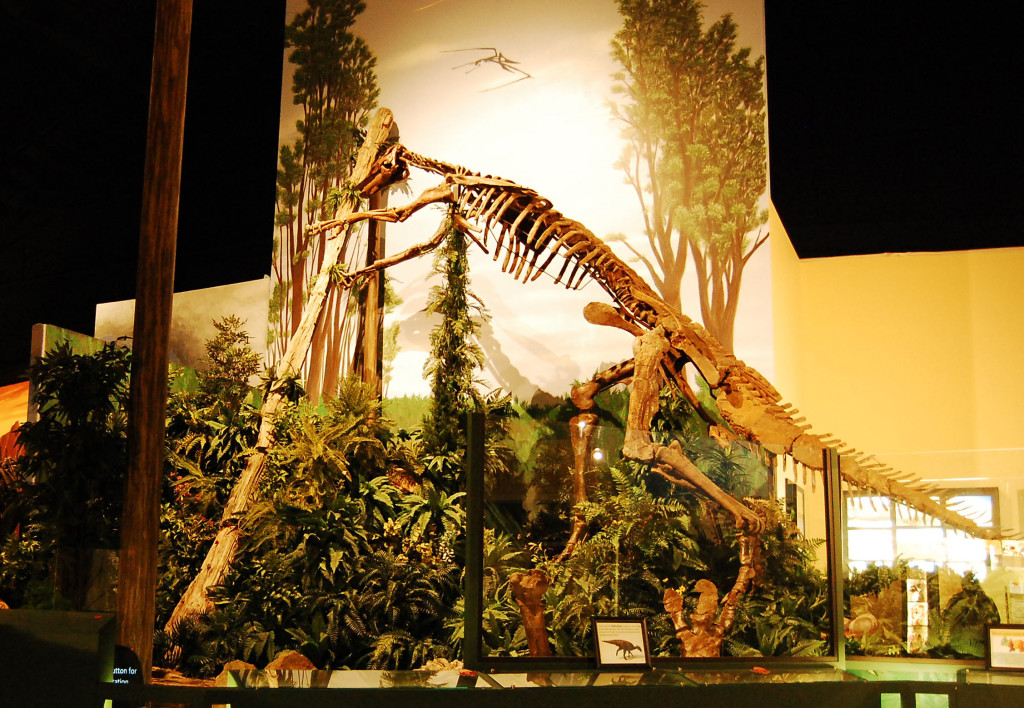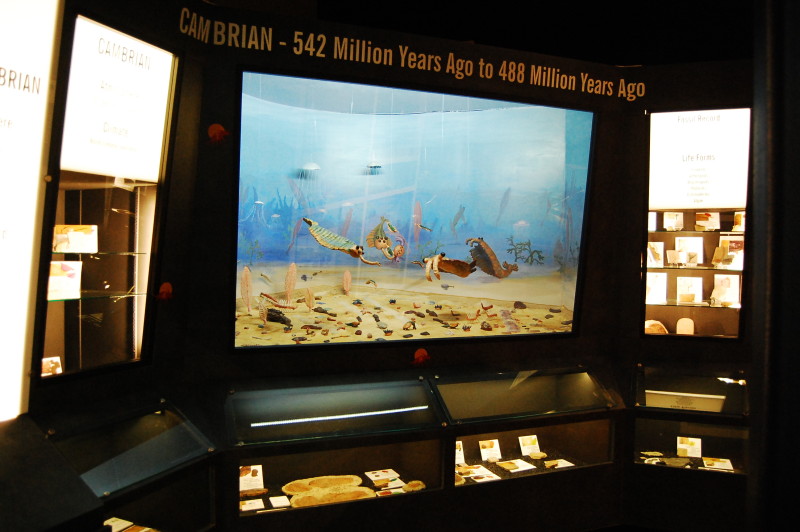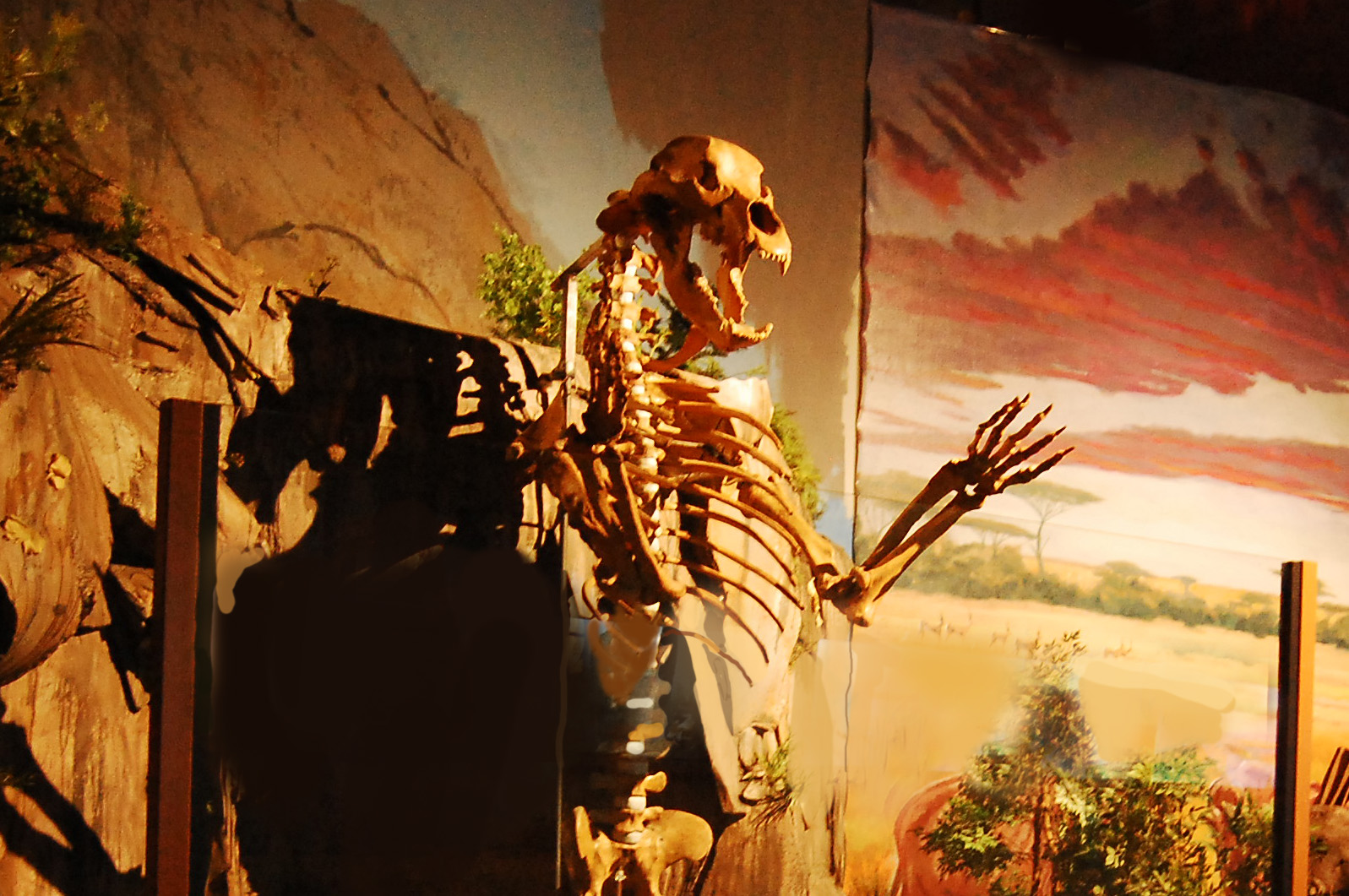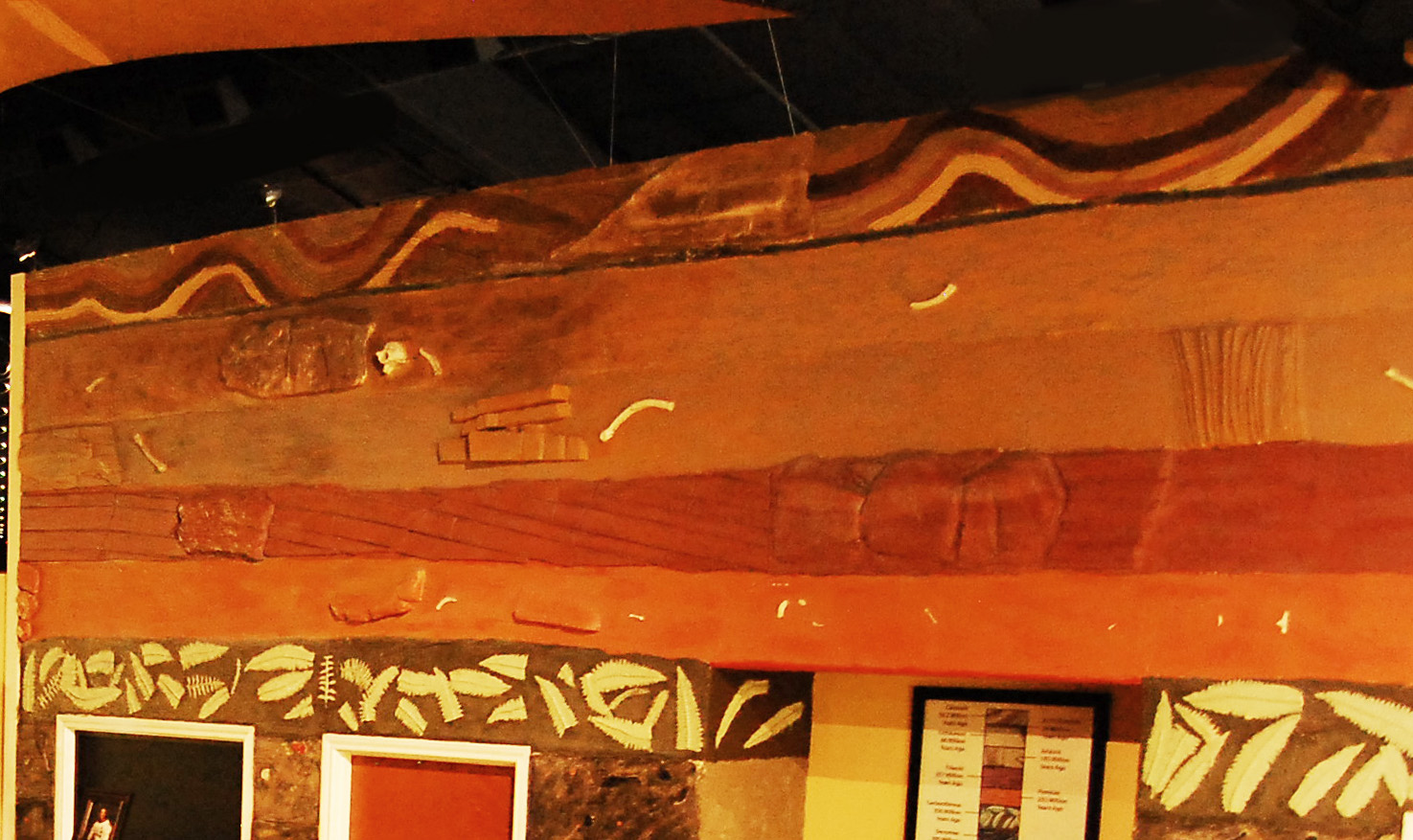Mary Ann Hadrosaur was found in the Hell Creek Formation of Montana by the Naranjo expedition in 2008. She lived 68 million years ago in a swampy environment. Hadrosaurs were known as duck-billed dinosaurs and were herbivores. Mary Ann is very well preserved. If you look down her back you can see tendons that were fossilized along with some impressions of her skin. Her foot is a very detailed and a great example of her skin impressions. From her we can tell what the skin and tendons of a hadrosaur probably looked like. She is the first Hadrosaur found with her hooves. Mary Ann Hadrosaur is 26 ft. long.
The reason we know that Mary Ann lived in a swampy environment is because of the fossils that we found near her. Fossilized pine cones were found near her. Leaves, fly larva, and petrified wood all gave us clues as to what environment she lived in. There is also a piece of chewed wood that she could have been possibly chewing before her death. All of these things help us to know the environment that she was in when she died.
Here you can see pictures from Montana when Dr. Neal found Mary Ann Hadrosaur. You can see where he found her foot and how intact it was.
These are fossilized bones from a Thescelosaurus. They lived in the very late cretaceous period right before the extinction event. They were bipedal herbivores with small arms and a long tail.
These fossilized bones come from a Therizinosaurus, meaning “scythe lizard”. This dinosaur was fairly large and lived during the late cretaceous. It was known for its long gigantic hand claws, the longest of any other dinosaur. Even though they have these long claws they were probably herbivorous.
If you look up you can see one of the largest flying animals of all time. The Quetzalcoatl was a pterosaur from the late cretaceous period. It was as tall as a giraffe and still holds the record for the world’s largest wingspan at 38.5 ft.





